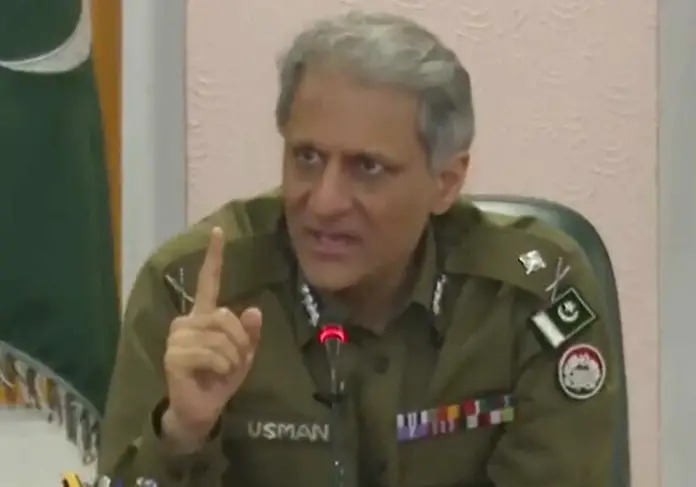The primary role of police forces is to enforce laws, investigate crimes, and ensure the safety of citizens. In the vast and populous country of Pakistan, effective fulfillment of this function necessitates well-equipped police forces in terms of personnel, weaponry, forensics, communication, and transportation support. Operational flexibility is also crucial for the competent execution of duties, along with the provision of adequate working conditions and accountability for performance and abuse of power.
Police officers in Pakistan undertake a diverse range of tasks, including crime prevention and response, internal security, and law and order maintenance, as well as various other responsibilities such as VIP protocols, traffic management, disaster rescue, and removal of encroachments. However, the low police strength per lakh population in Pakistan, approximately 180 police per lakh people compared to the UN’s suggested standard of 222, places a significant burden on each officer. This results in extended working hours and a substantial workload, negatively impacting efficiency and performance.
Understaffing not only reduces the effectiveness of police officers, leading to poor investigation quality but also contributes to psychological distress, which has been linked to various crimes committed by officers and contributes to case pendency. The challenges of insufficient human resources, financial constraints, poor infrastructure, obsolete weapons, lack of health facilities, and a lack of a proper mechanism for the education of police officials’ children highlight the need for serious reforms.
The police force in Pakistan faces formidable challenges related to human resources, infrastructure, financial constraints, obsolete weaponry, absence of health facilities, and a lack of resources for daily operations. The inadequate allocation of resources by the state hinders the police in carrying out their duties effectively.
The annual budget increase is primarily driven by routine factors such as yearly increments, additional allowances announced by governments, and the salaries of new recruits. Salaries constitute a substantial portion of the budget, ranging from 83 to 84 percent, while other non-developmental expenditures contribute an additional 9 to 10 percent. This pattern is mirrored in the training budget, where a significant proportion is typically allocated to salaries.
A comparison of total provincial budget allocations relative to the population of relevant jurisdictions reveals that the Punjab Police is the most under-budgeted police organization. Calculating the average annual spending on police involves dividing the population of the province by the total annual budget allocation.
Within the total budget allocation for provincial Police Departments, each district receives a designated share of the budget. This district police budget is divided into two major portions: salary and non-salary. The non-salary segment encompasses funds for fuel, stationery, utility bills, the cost of investigations, rewards, and other miscellaneous expenses. Furthermore, the head of the district police allocates or distributes funds at the level of police stations, considering operational and administrative requirements.
Surprisingly, despite registering five times more cases than Sindh, Punjab’s cost of investigation is less than double that of Sindh. In Punjab, with over 400,000 total cases registered, the funds allocated for investigation amounted to approximately Rs 1,247 per case. Conversely, in Sindh, where almost 83,336 cases were reported during the same period, the budget allocated was Rs 3,852 per case.
Based on previously available data, it is evident that each police station requires an additional amount of Rs 0.8 million beyond the budget allocation to cover expenses related to fuel, utilities, maintenance, and investigation costs.
The relationship between the police and the public, crucial for effective policing, is marred by a profound lack of confidence. To prevent crime and maintain public order, the police depend on the community’s trust, collaboration, and assistance. In the course of crime investigations, police officers often rely on community members as informants and witnesses. Therefore, ensuring effective policing necessitates a concerted focus on enhancing police-public relations. Unfortunately, the prevailing perception is that the police are inefficient, corrupt, and prone to violence, contributing to a significant lack of confidence in the relationship.
A substantial portion of the population perceives the police as abusive and believes that law enforcement personnel misuse their power in their efforts to maintain societal order. This perception creates an inherent challenge of diminished coordination, making it challenging for the police to effectively carry out their duties. The resulting lack of confidence in the relationship further complicates the task of law enforcement in performing their functions efficiently.
Dr. Usman Anwar, the current Inspector General of Punjab, is a diverse and dignified police official dedicated to enhancing the police force and improving its public image. Employing transactional leadership qualities, akin to authoritative leadership, he utilizes a rewards-based system to motivate subordinates, with rewards or punishments based on performance and adherence to rules.
However, IG Punjab’s primary focus lies in a “people-centered approach” that seeks to inspire, empower, and motivate the team. Functioning as a transformational leader, he embraces inclusivity, considering each individual’s unique needs, skills, and motivations. Maintaining an “open door” policy fosters frequent and candid communication, promoting a conducive environment for the police to work more efficiently and effectively.
To enhance the effectiveness of the police in Pakistan, a multi-layered approach is imperative and must be adopted by the authorities. Firstly, there is a pressing need for substantial reforms addressing the critical issues of understaffing, insufficient human resources, and inadequate infrastructure. Adequate budget allocations, with a strategic emphasis on modernizing equipment, and training programs, and ensuring the well-being of police personnel, are essential. Improving police-public relations is crucial, involving community engagement programs, transparency, and measures to build trust. Additionally, specialized training programs focused on modern investigative techniques and community policing can significantly enhance the skills of the force. Strengthening oversight mechanisms to ensure accountability for abuses of power and corruption is paramount. Furthermore, implementing technology-driven solutions, such as digitized crime reporting systems and predictive policing tools, can optimize resource allocation and enhance crime prevention efforts. Collaborative efforts between law enforcement agencies and the community can foster a sense of shared responsibility for public safety. By addressing these key areas, Pakistan can work towards fostering a more effective and responsive police force.







